Few birds are as closely associated with earthworms as the American robin. These red-breasted backyard favorites are hopping around in the grass and plucking wriggling creatures from the ground. But how do robins find worms? The answer might surprise you. Turns out, a robin’s ability to hunt down worms in your yard relies on a few of its senses — one more than the rest.
Enjoy 15 cheerful robin bird pictures to welcome spring.
How Do Robins Find Worms?

Dr. Kevin J. McGowan, senior course developer and instructor for Bird Academy at the Cornell Lab of Ornithology, says the consensus about this has changed over time. “When I was a kid, we were told they were listening for them,” he says, “or that they were turning their heads, so you could tell that they were listening.” Kevin points out the flaw in that theory: “The problem is that worms don’t make a lot of noise, and the bird’s eyes are on the sides of its head.”
Here’s everything you need to know about robin nests and eggs.
So, Kevin explains, the head-tilting motion isn’t necessarily evidence of a robin listening for a worm. “What it’s doing is it’s getting a very good look with one eye, and then it often turns its head and switches over to the other eye. They’re mostly visual predators, so they’re trying to see things.” He says the robin stops, looks, stops, looks, and then dives forward to get something ahead of it. He calls robins an “ambush predator,” since they flick debris away quickly with their beaks to catch unsuspecting prey.
Wondering how to attract robins to your yard year-round? Find out what foods robins eat.
What Other Senses Do Robins Use?

With that said, it’s possible robins make use of a couple of other senses to find worms; they just aren’t relying on them as heavily as they do their sense of sight. Kevin points out that robins might hear worms to catch them. “If something is making noise, I’m sure they can hear it,” he says. “But they’re not set up to be totally listening predators, the way owls are.”
Do American robins mate for life?
Kevin also says they might make use of the sense of touch. “When they’re moving stuff, they might very well feel things as well. When they’re swiping their bills through the base layer or through the dirt to uncover invertebrates, they might feel something, too. So that’s another sense they could be employing.”
Find out what a robin bird call sounds like.
Next, discover the truth about another mystery: Do robins fly south in winter?
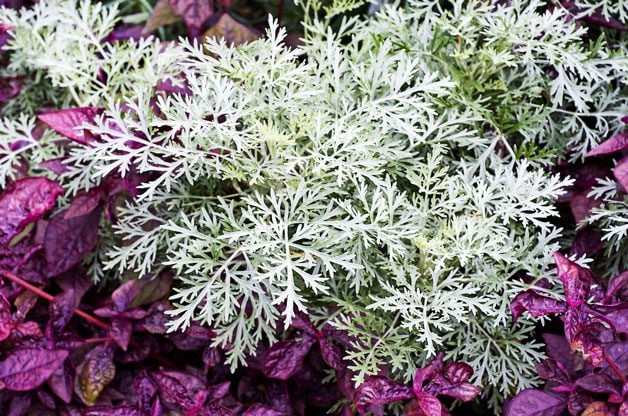
Every gardener dreams of plants they can pop in the ground and enjoy for years to come without a lot of work or maintenance—easy perennials anyone can grow. These perennial plants, as long as they are hardy in your region, will adapt to all sorts of soil, from lush loam to clay, and to all kinds of conditions. They look good even when they’re out of bloom, lending texture with their handsome foliage. All you need is six hours of sunlight a day. Then, just plant and walk away.
Year after year, these plants keep going. They leave us free to fiddle with fussier plants or experiment with new combinations. With easy perennials as the foundation, your gardening thumb will get greener every day and you’ll hear many admiring comments from friends and neighbors.
Check out the top 10 plants you can’t kill.
Easy Care Yellow Perennials

Happy yellow flowers will light up any backyard. Start scouting for great daffodils, a bulb celebrated for their resistance to deer, squirrels and other critters. Varieties to look for include King Alfred and Tete A Tete.
For a low-maintenance, midseason bloomer, choose Happy Returns daylily. It’s a rebloomer that sends up occasional blooms all season and its lemony flowers complement any companion. Plant this downsized daylily in front of beds or among other garden flowers for contrasting foliage.
One of the tallest garden perennials is a cutleaf coneflower. This rugged heirloom is perfect for brightening a privacy fence. Tie garden twine or plant tape around the stems through the fence to help them hold up the fluffy double yellow daisies.
Check out the top 15 easy flowers anyone can grow.
Easy Care Blue Perennials

Veronicas have been garden favorites for years, thanks to their bluest-of-blue color and agreeable disposition. Go for upright growers like Sunny Border Blue or Royal Candles for months of bloom, or plant groundcover types such as Georgia Blue.
Catmint (Nepeta) creates a billow of blue that begins at bearded-iris season and keeps going until fall. Look for Six Hills Giant, Walker’s Low and Blue Wonder that are better behaved in the garden.
For a dramatic blue-purple color, try May Night or East Friesland salvias. They’re perfect partners for white Shasta daisies or pale pink dianthus.
Lavender-blue Monch aster (Aster x frikartii) kicks in at the June peak of perennial bloom, much earlier than many asters, and keeps going through the first fall frosts. Hardy geranium Rozanne, whose intense blue will make your jaw drop, blooms the same way. Both are hardy to Zone 5.
Check out the top 10 purple flowers to grow in your garden.
Easy Care Sedums for Pollinators
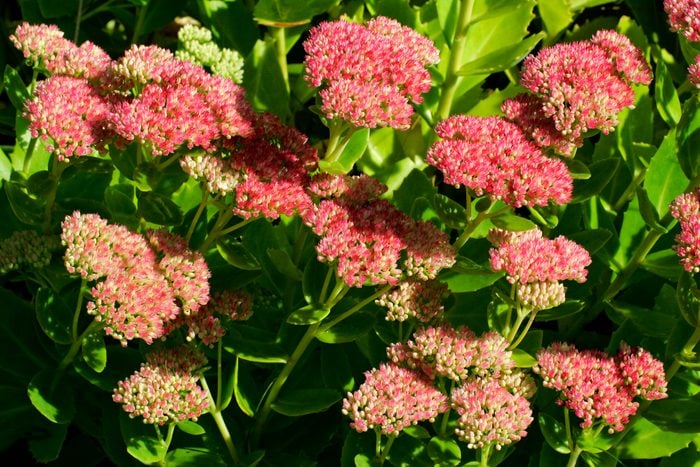
Sedums draw butterflies and bees to their summer flowers. Made for hot, dry places, sedums store water in their leaves. Waterlogged soil is a death knell, but they’ll do fine in average conditions, as long as they get plenty of sun. They’re perfect for hillside niches among rocks, in gravel or sandy soils, atop walls or along a sidewalk. Hardiness varies, so check the tag.
Autumn Joy and other upright sedums stay in a clump. But ghostly gray Cape Blanco, red Dragon’s Blood, chartreuse Angelina and other groundcover types spread rapidly. Choose a spot where their natural habit is an asset, not a drawback—edging your driveway, spilling over a wall or covering a slope—and you won’t have to rein in these fast growers.
The variety of colors and leaf shapes, plus the butterfly-attracting flower clusters, make sedums addicting. With dozens of varieties, your only challenge will be not buying them all.
Discover 15 drought-tolerant plants that can handle dry weather.
Easy Perennials with Silvery Foliage

Soft as velvet, lamb’s ears spread into a solid patch of silvery leaves. Fuzzy stalks of purplish pink flowers arrive in early summer, but it’s the silver stems and foliage that steal the spotlight. Plant a swath of lamb’s ears among other perennials for an eye-catching accent, or use them to edge your beds. Straying stems, which root as they go, are easy to peel up if they spread too far.
The silver foliage of artemisia is a treasure, but the running roots of Silver King or Silver Queen cultivars can take over the garden as soon as you turn your back. For good behavior, you can’t beat Lambrook Silver, a filigreed mound that stays in place, and similar but less hardy (to Zone 6) is Powis Castle.
Russian sage (Perovskia) was an instant hit when it burst on the garden scene, and its popularity keeps rising. The silvery plant finishes the summer season with an arching fountain of blue flowers that beckon to migrating monarchs and other butterflies.
Next, check out the the best perennials to grow for hummingbirds.
What shrubs grow well in shade? When garden expert Melinda Myers told us that shade shrubs was one of the most frequent questions asked during her appearances, we knew it would make a great Top 10. In the past, we’ve had stories on shrubs, and stories on shade garden plants, but we’ve never combined the two until now. With some guidance from Melinda and tips from Michael A. Dirr’s Manual of Woody Landscape Plants, we pulled together this stellar group of shrubs for shade. These recommendations should bring some life and color to the shadiest areas of your backyard.
Check out the top 10 summer flowering shrubs for full sun.
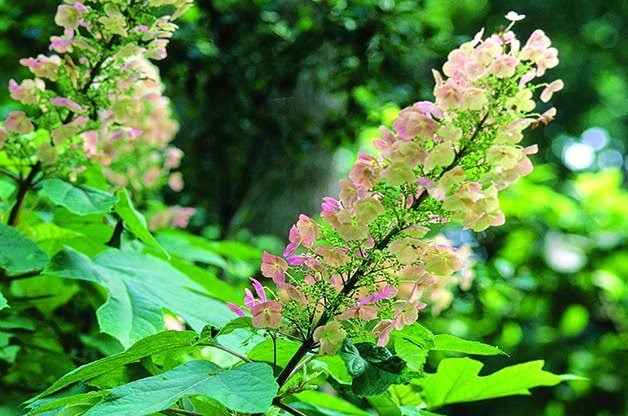
Oakleaf Hydrangea
(Hydrangea quercifolia species, Zones 5 to 9)
The white blooms on this 4- to 6-foot shrub change to a purplish-pink in late summer. Then the leaves take over and put on a spectacular fall show in shades of red, orange, brown and purple.
Why we love it: It combines the pretty blooms of a hydrangea and the distinctive leaf shape of an oak tree. Even if you don’t get consistent blooms, the foliage is definitely worthwhile.
Check out the top 10 shade tolerant coral bells varieties.

Serviceberry
(Amelanchier species, Zones 2 to 9)
With so many types of serviceberry on the market, you’re sure to find a good fit for your yard. Spring blooms, fall color, smooth gray bark and edible June berries make it a year-round winner. Popular choices include the Saskatoon serviceberry (A. alnifolia), developed for commercial fruit production, and the running serviceberry (A. stolonifera), a compact 4- to 6-foot shrub perfect for small landscapes.
Why we love it: It requires little pruning, making this shrub one of the best low-maintenance options.

Dogwood
(Cornus species, Zones 2 to 8)
While it steals the show in spring, this beauty has year-round appeal, sporting abundant foliage in summer, rich color in fall and berries in late fall and winter. The height varies greatly. For instance, the popular redtwig dogwood (C. alba) can be as low as 8 feet, while the flowering dogwood (C. florida) reaches tree heights of 20 to 40 feet!
Why we love it: Birds love it! No matter what your space, there’s a dogwood species for you. Ask your local nursery or extension office for the best dogwood shrubs for shade.

Virginia Sweetspire
(Itea Virginica, Zones 5 to 9)
This native shrub bursts with fragrant summer flowers and vibrant fall color. It generally grows 4 to 5 feet high. And since it doesn’t have many disease or insect problems, it works in any landscape. Look for the cultivar Henry’s Garnet, a popular choice especially for northern regions.
Why we love it: The fall color that this shrub displays will give favorites such as burning bush a run for their money. The vivid red leaves often last well into fall.
Discover the top 10 hummingbird plants that grow in shade.

Red Chokeberry
(Aronia Arbutifolia, Zones 4 to 9)
Growing 6 to 10 feet high, this resilient shrub does well even in poor soil, tolerating wet and dry conditions. It has small white or slightly reddish blooms in spring, glossy foliage in summer and bright-red berries from September through November.
Why we love it: Its crimson leaves offer a gorgeous autumn display, and its bountiful red berries brighten up the drabbest winter.

Japanese Pieris
(Pieris Japonica, Zones 5 to 8)
If you live in the Northeast, this evergreen might be a bit hard to establish; lace bugs seem to love it. But it does beautifully in Southern states and other areas where lace bugs aren’t such a problem. It grows 9 to 12 feet tall and has lovely white blooms in early spring.
Why we love it: You can find an array of cultivars, so you’re bound to get one that’s right for your region. For example, Valentine’s Day has early blooms, and Coleman forms red flower buds that maintain their color in winter.
Never plant these invasive shrubs (and what to grow instead!)

Shrubby St. Johnswort
(Hypericum Prolificum species and cultivars, Zones 4 to 8)
Don’t let this shrub’s small size fool you. It grows only 1 to 4 feet high, but it packs a big punch, with bluish-green leaves all summer and bright-yellow blooms from late June through August.
Why we love it: This shrub is relatively disease-free, and its fruit will make a gorgeous fall and winter accent for dried arrangements.
Check out 5 drought tolerant shrubs for your garden.

Bottlebrush Buckeye
(Aesculus Parviflora species, Zones 4 to 8)
This unique shrub has abundant summer flowers, formed in panicles up to 12 inches long. It grows up to 12 feet tall and spreads another 15 feet. The medium- to dark-green leaves change to a yellow-green in fall.
Why we love it: If you have the room, this substantial shrub is the perfect addition under a large, established shade tree.

Japanese Kerria
(Kerria Japonica, Zones 4 to 9)
If you want a shrub that offers year-round color, kerria is for you! It has bright-green leaves in summer that last through most of the fall. Then the attractive yellowish-green to bright-green stems add color in winter. Finally, the bright-yellow spring blooms are stunning.
Why we love it: It’s a manageable shrub, growing 3 to 6 feet tall. Though it’s slow to start, it grows rapidly after that.
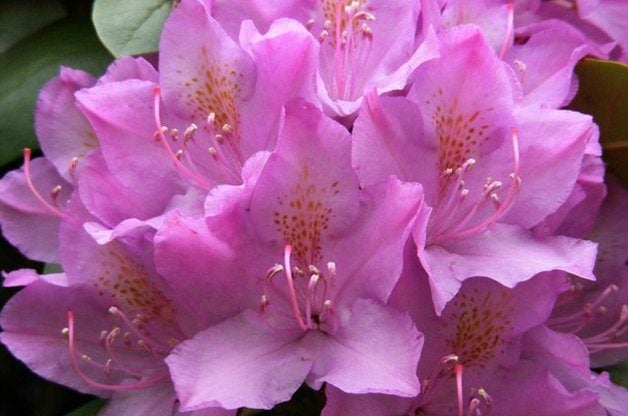
Rhododendron
(Rhododendron species, Zones 4 to 9)
This shrub is so popular that it has its own fan club, the American Rhododendron Society. It’s nearly impossible to highlight the more than 900 species, but in general, they grow up to 8 to 10 feet high and wide. They bloom in late spring and then offer handsome foliage after that. Rhododendron vs azalea: Here’s how to tell the difference.
Why we love it: You get colorful flowers in the shade! And with all the different cultivars on the market, it’s easy to find your favorite color.
Wren vs Sparrow: ID Challenge
House Wren
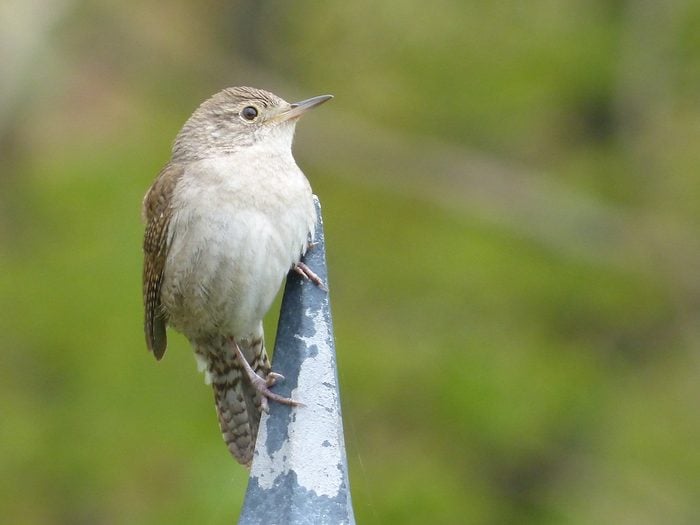
The house wren and house sparrow are small brown birds with similar names. Both species are commonly seen in backyards. However there are some easy ways to tell the difference between a wren vs a sparrow.
A house wren has a longer, thinner bill that is perfect for catching and eating insects. You will rarely see them stop by your feeding station for seeds and suet. However, these cavity nesting birds will often use birdhouses to raise a family in your yard. House wrens migrate south in winter and are most often spotted across most of the United States in the summer months. They are also are smaller birds than house sparrows and tend to prefer low, brushy habitats more than wide open areas.

Some other wrens you might see in the United States include Carolina wrens and cactus wrens.
Enjoy 16 delightful pictures of wren birds.
House Sparrow

The house sparrow has a thicker, sturdier bill for eating seeds and cracked corn. This species commonly visits bird feeders. Males have a distinctive black bib, but the female is more plainly colored. Though this species also uses bird houses, these invasive birds are are seen as undesirable by birders. This is because they kill or harm native species such as bluebirds. Here’s how to keep their nests out of bluebird boxes.

House sparrows are extremely adaptable birds. You can frequently spot them at restaurant patios and anywhere they can snag a spare crumb on the ground.
Though house sparrows tend to have a bad reputation, there are many other native sparrow species you might see across North America. Look for the song sparrow, the chipping sparrow, and the white-throated sparrow.
What Does a Cactus Wren Look Like
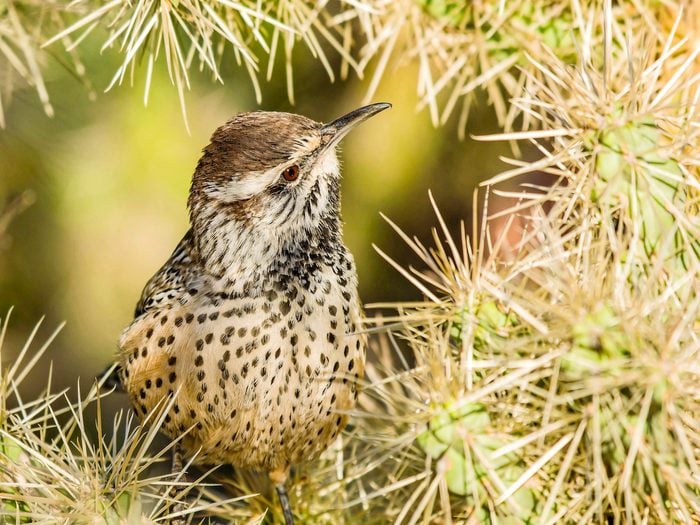
Cactus wrens are the largest type of wren found in the United States. They have boldly barred, striped and spotted plumage, and their wings and tail are barred with black. Also look for a bold white eye stripe. The cactus wren is the state bird of Arizona.
House wren vs Carolina wren: Learn how to tell the difference.
Nest and Eggs

Cactus wrens are skilled at slipping through the sharp spines of cactus thickets, choosing to build nests and raise their young there. A cactus wren nest is conspicuous—a domed affair with a tunnel entrance 5 to 6 inches (13 to 15 cm) long. The whole structure, woven of plant fibers, leaves, and twigs, is shaped somewhat like a flask lying on its side. Typically, it rests in the arms of a big cactus or on a branch of a thorny bush or mesquite tree.
According to birding experts Kenn and Kimberly Kaufman, one popular location for their bulky nests is a type of cactus called cholla, which looks like a short jumble of stout branches covered with sharp spines. The big, boldly marked birds build their nests deep within the center of this cactus. They manage to fly in and out hundreds of times without getting stuck.

They may also nest in cavities, such as a saguaro (above). A pair of cactus wrens maintain several nests at one time. They may raise three broods a year, changing nests at the beginning of each cycle.
Welcome nesting wrens to a wren bird house.

After the young have fledged, the adults continue to make repairs to the nests, since they are used as winter roosts.
When do house wrens return in spring?
What Do Cactus Wrens Eat

According to the Arizona-Sonora Desert Museum, cactus wrens forage for food on the ground, primarily eating insects such as ants, grasshoppers and beetles, as well as some seeds and fruit.
Enjoy more delightful pictures of wren birds.
Habitat

This wren is a bird of arid, low-altitude country where cacti are plentiful. The species does not migrate. Birders will find them year-round in desert areas throughout the southwestern states, and also in dry, brushy woods.
Next, learn what a Carolina wren call sounds like.
There are a few ways for birders to tell the difference between a house wren vs a Carolina wren. First of all, these species have slight differences in size and appearance. Secondly, consider where (and when) you saw the bird, because a house wren has a wider range across the United States. Look at what the bird is eating for another clue, and lastly, listen to its song.
Learn how to attract nesting Carolina and house wrens.
House Wren
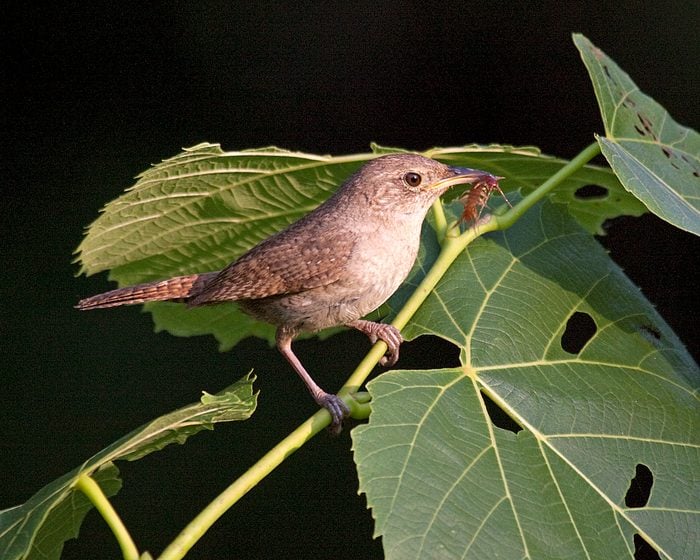
House wrens are slightly smaller birds than Carolina wrens, and their plumage is primarily plain brown. This species almost exclusively eats insects, so you are unlikely to see them at your seed or suet feeders. However, these cavity nesting birds will use birdhouses to raise their young. You may catch their attention with a bird bath, especially if you add a small fountain or dripper.
These musical songbirds prefer brushy habitat rather than open areas like grassy lawns. You’re more likely to see them in your yard if you have a brush pile or plant plenty of low growing bushes.
The house wren is the most common wren in the U.S., with a broad range that covers most regions during the summer breeding season. Find out when house wrens return in spring. You’re more likely to see these birds down south in winter.
“House wrens (above) used a newly installed nest box on my deck. I loved seeing the diversity of prey that they brought to their growing brood! The parents brought several centipedes,” says Elizabeth Tiller.
Enjoy 16 delightful pictures of wren birds. Plus, learn how to tell wrens apart from sparrows.
Carolina Wren

The reddish-brown colored Carolina wren is slightly larger and chunkier looking vs a house wren. Look for the distinctive light colored stripe above their eye and a beige colored belly and chest. Carolina wrens are less common in northern and western states, but you can spot them year-round across their range. These wrens also eat insects, but are more common visitors at suet feeders.
“A very cold day in February, this little Carolina wren (above) was hanging on a branch to one of our trees near the house in a snowstorm. The picture was taken through a window,” says Deborah Bryk.
Find out what a Carolina wren call sounds like.
Hummingbirds Love Perennials
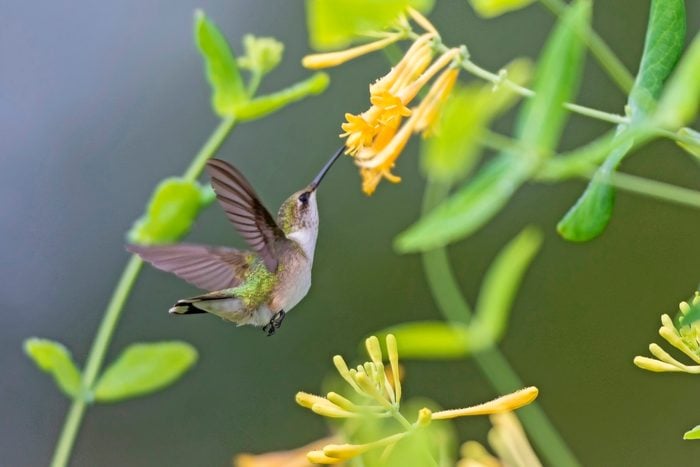
Sugar-water feeders are one way to attract hummingbirds, but an even better bet is an abundance of vibrant plants growing in your garden. Plant the best perennials for hummingbirds to keep these pretty pollinators coming back each year.
“If we want to truly support birds, our first instinct must be to create native habitat,” says Becca Rodomsky-Bish, a project leader for the Cornell Lab of Ornithology. “While sugar-water feeders are a fun way to pull birds in close to our homes, they don’t resolve the long-term issue that many birds such as hummingbirds can have, which is where to forage for native food resources.”
Hummingbirds may consume about half their body weight in nectar each day, feeding approximately every 10 to 15 minutes. (They also eat small insects, especially during nesting season.) All that sipping means they require access to many blooms every day and hummingbirds can be very territorial about their favorite food sources.

Native perennials are a terrific option to fill that demand. “Plants that are attuned to your region will bloom and produce what is needed, when it is needed,” Becca says. “Provide a variety of plants that produce flowers at different times in the season to best align with the resources hummingbirds require to successfully recover after long migrations, raise their young and fuel up to prepare for their fall migrations.”
Most North American hummingbirds migrate farther south for winter. They make long journeys in spring and fall and need ample food along the way. Native perennials’ bloom cycles ensure that your garden is stocked with nectar throughout the seasons.
Check out the top 10 annuals that attract hummingbirds.
Grow the Best Perennials for Hummingbirds

For the best perennials that attract hummingbirds, one type tends to be better than all the rest.
“Hummingbirds prefer plants that produce tube-shaped flowers, as they generally contain the most nectar,” says Becca. And while the old wisdom about plants with red flowers holds true, she promises that hummingbirds will visit blossoms of any hue, as long as they provide plenty of nectar.
Adding perennials for hummingbirds is an easy way to benefit both birds and humans. We get the joy of seeing these colorful jewels up close. And hummingbirds find a more robust environment that provides food and shelter. As Becca says, “Adding native perennials pays it forward for generations of wildlife.”
Discover the top 15 colorful hummingbird flowers to grow.
How to Choose Perennials

In most regions, perennials go dormant for the colder months and their shoots grow anew in spring. In warmer zones, perennials are often evergreen, though they may only bloom in certain months. Either way, perennials tend to require a little less maintenance and cost than replanting annuals each year.
Psst—here’s the difference between annuals and perennials.
Since perennials are going to be with you for the long haul, be sure to choose them carefully. Do some research before buying. A potted plant that looks pretty at the nursery could turn into a monster that spreads underground or crowds out everything nearby. Look at tags to find out how tall and wide a plant will get.
Also, talk to a nursery specialist about whether the perennial is fast-growing, which might mean it requires more pruning or dividing each year.
As with any shrub, tree or flower, review the requirements for sun, water and soil type. Choose some flowering plants, such as bleeding hearts or columbines, specifically for shady spots in your yard. If you really love a plant but are worried about the conditions it needs, try growing the perennial in a container instead of straight in the ground. This allows you to control the soil type and amount of sun the plant receives.
Learn how to attract hummingbirds to your small garden.
Our Favorite Hummingbird Perennials

These nectar-producing plants are easy to grow and produce blooms year after year.
- Beardtongue, Zones 4 to 9
- Bee balm, Zones 3 to 8
- Butterfly weed, Zones 3 to 9
- Cardinal flower, Zones 3 to 9
- Chuparosa, Zones 8 to 11
- Columbine, Zones 3 to 9
- Goldenrod, Zones 3 to 9
- Native honeysuckle, Zones 3 to 10
- Phlox, Zones 3 to 9
- Salvia, Zones 3 to 11
Not sure how garden zones work? Learn more and find your plant zone.
How to Care for Perennials
Generally perennials are easier to care for than annuals, perennials do require a little maintenance after they’re planted and once established.
Some types, especially those that grow from rhizomes or bulbs, should be divided every few years. Dig them up, roots and all, then use a sharp spade to split them apart into smaller sections. Spread them out and replant.
Perennial shrubs may need pruning each year, but be sure to research the right time for this chore. Many spring flowering shrubs such as lilacs set buds early in summer, so if you prune late in the growing season, you could end up with no blooms the following year.
Next, learn why you should add a bird bath for hummingbirds to your yard.
Most bird enthusiasts are thrilled to see multiple hummingbirds in their backyard. Even just one brilliantly colored, fast-flying hummingbird sparks a smile. But last winter, Birds & Blooms reader Judy Cline experienced a phenomenon: Up to 100 Anna’s hummingbirds in her yard, all at once.
Dozens of Hummingbirds

While most types of hummingbirds migrate south, Anna’s hummingbirds are known to stay across their western range year-round. Judy says she normally has 10 to 30 hummingbirds in her yard every day, even in cold weather! But when the crowd of multiple hummingbirds descended at the end of December 2021, she estimates there were up to a hundred of the buzzy birds. She had five feeders out that were drained dry every day. There were so many hummingbirds that she went through “two and three bags of sugar.”
Here’s how to feed and attract hummingbirds in winter.
We can’t know for sure why the large flock of hummers decided Judy’s yard in Washington was the place to be, but she has a theory. “I’m not sure if all of our neighbors who occasionally feed hummingbirds had frozen feeders or took them down,” she says. “But I’ve never, ever had that many in the wintertime. I think the word got out that the Cline residence was open for business, and the bar was open!” She said she believes the hungry birds were desperate, and there wasn’t enough food in the area for them. “So, they all came to my house,” she says.
Get answers to frequently asked questions about feeding hummingbirds.
Judy’s Advice for Feeding Winter Hummingbirds

While many would keep their feeders inside in 7-degree weather, Judy solved the freezing problem. How? She wrapped the tops of her feeders with several layers of newspaper. She also made use of a heated hummingbird feeder. As for filling the feeders, Judy used the simple “4 to 1” sugar water ratio that we know hummers love. “I was mixing it up, sometimes, twice a day,” she says. She took her feeders down when the birds left for the night, then she’d set an alarm for 5 a.m. and put them out again.
Psst—your winter birds need a heated bird bath.
Equally essential as feeding the birds was keeping the feeders clean. Judy took her feeders in every other day to wash them, check closely for mold and replace the sugar water mixture. “You have to make sure that it’s clean,” she says. “Clean feeders are very important, and clean food is very important.”
Judy’s been feeding hummingbirds for more than a decade. She takes steps to ensure her yard is safe and provides well for the birds. “I do things like having a fountain bird bath — I have two or three of those that Anna’s will get in,” she says. “I call it ‘getting in the pool.'” She has also planted hummingbird-favorite flowers including salvias and fuchsias. “Anything with a trumpet,” she says of her flower choices.
Next, find out if hummingbirds will use a birdhouse.
What Does a Carolina Wren Look Like?

Carolina wrens have slightly more reddish plumage than house wrens. They are year-round residents throughout the eastern states. These stocky birds have a white eye stripe, bright rusty-brown plumage and beige below. They measure about 5 3/4 inches long with a wingspan of 7 1/2 inches.
Scientific Name: Thryothorus ludovicianus
Family: Wren
Learn how to attract and identify a house wren and a Bewick’s wren, and discover how to attract wrens to your yard.
Carolina Wren Nest and Eggs
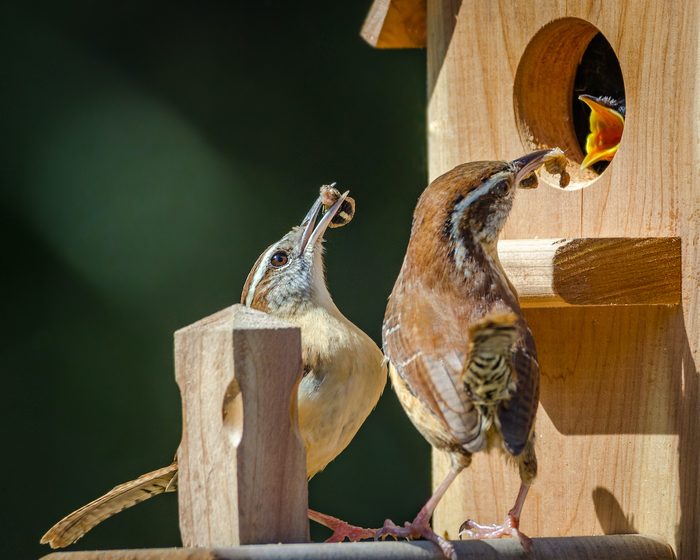
Pairs of Carolina wrens stay together, defending their nest and territory throughout the year. This species is not picky about nest sites and may build their bulky nests in tree cavities, woodpiles, birdhouses, flower pots and more. The female lays three to seven white eggs with significant reddish spotting.
Learn how to attract nesting Carolina and house wrens. Plus, learn the difference between a house wren and a Carolina wren.
What Do Carolina Wrens Eat?

Their diet primarily consists of spiders, insects and some berries and seeds. They will come to suet feeders and may also eat peanuts, peanut butter, sunflower seeds, mealworms and other nuts. Wrens are also attracted to moving water, so add a dripper or fountain to your bird bath.
Don’t miss these delightful pictures of wren birds.
Bird Song
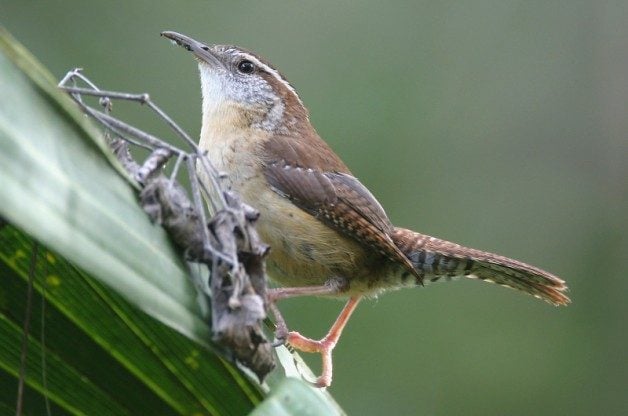
Listen to the Carolina wren’s call. Wrens are really boisterous singers and the portly Carolina wren is no exception. Their repetitive song is often heard as “tea-kettle, tea-kettle, tea-kettle,” or “Germany,” depending on which birder you ask. Male wrens cycle through a repertoire of various phrasing. The bird has been called “mocking wren” because it sometimes sounds like a catbird, kingfisher or certain other birds.
Bird songs provided by the Cornell Lab of Ornithology.
Meet the top songbirds in America.
Range Map and Habitat

Look for these birds in brush and heavy undergrowth in wooded areas. Brush piles may help attract a breeding pair of Carolina wrens to your yard, as this species prefers a bushy habitat with lots of cover. In winter, they’re occasionally found as far north as southern Canada. Support populations on the northern end of their range by offering suet for birds during cold snaps.
Head southwest to see a cactus wren.
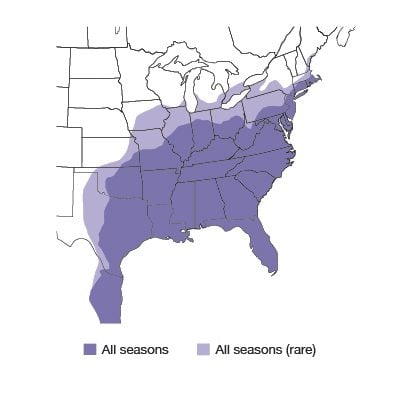
Range maps provided by Kaufman Field Guides, the official field guide of Birds & Blooms.
Next, learn when do house wrens return in spring?